[page 2]
First Report of a Labor Museum at Hull House.
THE LABOR MUSEUM was first suggested by the fact that in the Italian colony immediately east of Hull House are many women who in Italy spun and wove the entire stock of clothing for their families, some of the older women still using the primitive form of spindle and distaff. It was hoped that by the help of these women it might be possible to graphically illustrate the development of textile manufacture, to put into sequence and historic order the skill which the Italian colony contains, but which has become useless under their present conditions of life in America. Such a demonstration, it was believed, would not only prove educational, but might have an indirect social result. The children, and more ambitious young people of the colony, are inclined to look down upon the simpler Italians who possess this skill, partly because they consider them uncouth and un-American and partly because undue stress in the schools is laid upon the writing and speaking of English. It was hoped that giving the older people a chance to use their skill might lead to several distinct results:
(a) Industrial processes themselves would be made more picturesque and given a content and charm which is usually laid upon the more barren life of business, or solely upon recreation.
(b) The young people who earn their livings in the shops and factories would have a chance to gain some idea of the material which they are constantly handling and might in time become conscious of the social connection of their work.
(c) The older people, who are habitually at such a disadvantage because they lack certain superficial qualities which [page 3]
[Illustration] GENERAL VIEW OF THE MUSEUM.
[page 4] are too highly prized, would have an opportunity, at least for the moment, to assert a position in the community to which their previous life and training entitles them, and would be judged with something of an historic background.
The word museum was purposely used in preference to the word school, both because the latter is distasteful to grown up people from its association with childish tasks and because the word museum still retains some fascinations of the show. It may easily be observed that the spot which attracts the most people at any exhibition or fair is the one where something is being done. So trivial a thing as a girl cleaning gloves, or a man polishing metal, will almost inevitably attract a crowd, who look on with absorbed interest. It was believed that the actual carrying forward of industrial processes, and the fact that the explanation of each process, or period, was complete in itself would tend to make the teaching dramatic, and to overcome, in a measure, the disadvantage of irregular attendance. It was further believed, although perhaps it is difficult to demonstrate, that when the materials of daily life and contact remind the student of the subject of his lesson and its connections, it would hold his interest and feed his thought as abstract and unconnected study utterly fails to do. A constant effort, therefore, was made to keep the museum a labor museum in the contradistinction to a commercial museum.
The museum was open every Saturday evening beginning in November, 1900, with a very simple equipment gathered largely from the neighborhood itself, and with workers who lived within a few blocks of Hull House. It was planned from the first to have five departments in the museum, but only the textile department was developed to any extent during the first winter. From the very first month it was evident that a number of people were attracted to the museum who had never cared to attend the other educational advantages offered by Hull House, and also that some of the most intelligent students from the various Hull House classes and clubs cared a great deal for this new attempt at actual demonstration. During the winter numbers of school children and classes of teachers visited the museum, and on several occasions the [page 5]
[Illustration] ITALIAN WOMAN SPINNING.
[page 6] museum itself became [peripatetic], and carried its demonstrations to normal schools.
In the history of spinning, the museum was able to show four variations of the earliest method of twisting the fiber into thread. In one case an Italian woman from the interior Southern Italy used stick weighted by two discs which twirl the fibers together, (1) while a Neapolitan from the coast used a stick weighted by a ring of metal, which increased the momentum, producing a higher rate of speed. A third variation was used by a Syrian woman, (2) and consisted of a small wooden disc at the top of the stick, with which she was able to produce a thread so fine that it would have been broken by a heavier spindle. It was interesting to note that the Syrian skill was able to make good the loss of momentum, and that the speed was sustained. The same process was further illustrated by a Russian woman, (3) who sat upon a chair with the flax held in place upon a stationary frame, thus freeing one hand and arm which would otherwise be obliged to hold the distaff. In all of these cases the spindle twirled in the air, and in three of them the thread was held in place by a small hook in the upper end. The women, Two Italians, a Russian, and an Irish woman, who used the comparatively recent spinning wheel, (4) not only did the work well, but very much enjoyed the demonstration and explanation, in which they joined. The museum was further able to trace the development of spinning from this simple stick through the large hand spinning wheel and the small Saxony wheel to a number of spindles mounted on a frame, and set in motion by the turning of one wheel for all. In connection with the spinning, demonstrations were held on the first crude process of scouring, dyeing and carding. Wool, cotton, flax and silk were put through the various processes of preparation, and spun into thread by skilled spinners almost every Saturday evening. Little collections of flax and cotton, as well as wool and silk, were exhibited in the various stages from the raw material to the factory product, and were supplemented by some really beautiful photographs, the latter showing the early Egyptian spinning of flax with the distaff, and the cultivation of flax [page 7]
[Illustration] SYRIAN WOMAN SPINNING.
[page 8] along the Nile. Pictures also illustrated the modern preparation of flax in Belgium with the outdoor retting in the river Lys. It was shown how far the invention of retting tanks had controlled conditions, in Belgium as well as Ireland, and the as yet insuperable difficulty of using the flax fiber from the huge flax fields of Minnesota was discussed. The museum exhibited map routes of the silk trade of merchant caravans between India and Southern Europe, emphasizing the relation of the silk-carrying trade to the discovery of America.
In weaving, the demonstration began with the earliest weaving of branches and woody fibers in making baskets and mats for the sides of huts. The method of lining baskets with clay and afterwards burning away the basket, which led to the development of pottery and its earliest decoration from the impression of the basket left upon the clay, was illustrated by an attractive little collection of pottery and baskets. The basket weaving classes for children were held in the museum, and they reproduced a variety of baskets and mats with some intelligence as to their original uses. The museum contained a model of a Navajo loom made by the Indians themselves, as well as a Turkish loom, both of which were used by the visitors. Classes of children have reproduced the Indian looms, and, as is done in various schools, they have woven very credible Navajo blankets (5). The old colonial loom, (6) of which the museum contains two specimens, was fast in comparison with the more primitive looms, but slow when compared with the youngest of all, the power loom. The nearest approach to the latter which the museum could show is a fly shuttle loom which demands the operator only to bring the lathe back and forth and to mend the broken threads – the harness being changed and the shuttle thrown by a system of levers, set in motion by the movement of the lathe (7). The products of the loom grew rapidly under the skill of the two Bohemian weavers. Even the casual visitor was able to see that there is no break in the orderly evolution from the spinning of the Navajo woman with her one disc stick, trailing on the ground like a top, to the most complicated machine, and the lecturer on industrial history needed scarcely to state that history looked at from the industrial standpoint at once becomes cosmopolitan, and the differences of race and nationality inevitably fall away. In the narrow confines of one room, the Syrian, Slav, Latin, and the Celt, show the continuity of industrial [page 8]
[Illustration] RUSSIAN WOMAN SPINNING.
[page 10] development which went on peacefully year by year among the workers of each nation, heedless of differences in language, religion and political experiences. A map showed early wool raising sections and the general character of soil and climactic conditions in wool raising countries with their grassy slopes and plains. This easily led to talks in regard to the effect of pastoral life, both in its nomad and more settled forms, upon primitive culture. The early Greek and Hebrew developments were taken as examples, and the effects of textile industries upon social organization were compared with the early raising of flocks in Spain and England.
The lecturer always surprised his audience, when he pointed to the historical chart upon the wall, illustrating the history of textile manufacture.
[Illustration]
It was startling in its revelation of the length of time the stick spindle was used, compared with the more recent spinning wheel, and the infinitesimal time during which steam has been applied to spinning. Beginning with 2000 B.C. the straight spindle was used to produce all the spun clothing used by mankind for more than three thousand years, and not until 1500 A.D. was the spinning wheel introduced into Europe. The European spinning wheel was used but a little more than two and one-half centuries when steam was first bunglingly applied to textile manufacture, coming in the latter half of the eighteenth century.
Many of the Italian women who came to the museum had never seen spinning wheels, and looked upon them as a new and wonderful invention. The chart shows that steam has been [page 11]
[Illustration] IRISH WOMAN SPINNING.
[page 12] applied to textile manufacturing but a short space in the long line of 3,900 years. Even then it is confined to certain countries of Europe and America, with spots in Asia and on the coast of Africa. A world map, exhibiting the places in which the straight spindle and the spinning wheel still survives, was a matter of unfailing interest to the visitors of the museum.
Of necessity, it was difficult in one chart to more than indicate the periods of adjustment which accompanied the changes in industrial methods, and although the times of transition were comparatively short, they were big with suffering. An attempt was made to fill out by the interpretation of literature that period when steam was first applied to the manufacturing of textiles. Perhaps the most striking picture is that drawn by Hauptmann in his drama of "The Weavers." An interesting lecture was given upon the Industrial Revolution in England and the appalling conditions throughout the weaving districts of the North which resulted from the hasty gathering of the weavers into the new towns, also on the regulation of those conditions as the code of factory legislation was slowly developed. The rise of trades unionism among textile workers was also traced, and their connection with the British labor movement. The lecturers in the museum found it easy, indeed almost inevitable, to pass from the historical situation to a statement of the industrial difficulties in which we of the present day are so often caught, and the need of adaptability and speedy readjustment to changing conditions which is constantly demanded from the contemporary workman. A tailor in the audience once suggested that whereas time had done much to alleviate the first difficulties in the transition of weaving from handwork to steam power, that in the application of steam to sewing we are still in the first stages. The isolated woman who [tries] to support herself by hand needlework is analogous in her position to the weaver of one hundred years ago, and the persistence of many of the weavers in their own homes until driven out by starvation is paralleled by much the same persistence among the "home workers" who sew in their own houses. In spite of Charles Kingsley's "Yeast," no poet or artist has endeared the sweaters' victim to us as George Eliot has made us love the belated weaver, Silas Marner.
Several lectures have been given on the earliest textile process and the various fibers employed in the manufacture of clothing. It is not, of course, the design of the museum to keep to primitive methods, but so rapidly as possible to add the more complicated machinery and to illustrate by actual manufacturing. To many visitors it opened up a new range of [page 13]
[Illustration] WEAVING AN INDIAN BLANKET.
[Illustration] COLONIAL LOOM.
[page 14] human speculation that for centuries the human race spun all its clothing with only a simple stick, and from that had to evolve the rapid and complicated machinery with which we are now familiar. It is a genuine piece of observation, and calls upon the analytic powers of the mind to work back from the complicated to the primitive and to see the two in historic relation. It breaks through the narrow present and one's own immediate interests to see the customs of the various countries reproduced in connection with the material with which one is most familiar and to follow this material from its primitive form as it is subjected to direct processes to a finished product. One obtains something of the freedom of observation and power of comparison which travel is supposed to give.
Every teacher of literature knows the difference between teaching it as an abstract subject and as an interpretation of the experiences which his students have shared, and much the same result was encountered in the various attempts to correlate the classes and the industrial activities of Hull House around the thread of industrial history. The textile museum was connected directly with the basket weaving, sewing, millinery, embroidery and dressmaking constantly being taught at Hull House, and so far as possible with the classes in design and drawing.
For a program of labor songs, rendered by the pupils of the Hull House music school, it was possible to find charming folk songs from the early textile workers, notably a spinning song by Rheinberger, and an old Irish weaving song of much beauty. For the latter period, involving machinery, it was more difficult, although the head of the Hull House music school, Miss Eleanor Smith, set to music a poem written by a sweat shop worker, Morris Rosenfeld, with such realism and force that the pupils of the music school have been invited to sing it before Consumer's Leagues and other associations who have found it not only interpretive of an experience remote from their own, but stirring and powerful in its moral appeal.
It is planned to carry on the museum during the winter of 1901-1902 with six departments: (1) woods, (2) book-binding, (3) textiles, (4) grains, (5) metals, (6) pottery. The department of wood will terminate in the shop for sloyd, carpentry and wood carving of the Hull House Guild. The history of book-making will correlate with Miss Starr's book bindery, in which apprentices are already at work, and to which will be added a small amount of printing outfit. The department of textiles will correlate with the Hull House classes as well as some normal school work to be undertaken in weaving and [page 15]
[Illustration] FLY SHUTTLE LOOM.
[page 16] textile design. The grains will lead up to the cooking classes, and the kitchen in connection with Hull House. A small blast furnace and forge and a potter's wheel and a kiln have made possible the beginnings of two other shops. The Chicago Arts and Crafts Society holds its bi-monthly meetings at Hull House, and its members have always been most generous with their time in assisting the workers in the shops. As four Hull House shops already exist, not merely for the sake of teaching, but primarily for the sake of producing, and as they already include the activities of many people besides the directors, it is planned to enlarge the shops upon these lines, and to present the historic background, through the people of the immediate neighborhood, whose training represents more primitive methods. These primitive methods will in turn be traced to the factories of the vicinity, and so far as possible the enlarged and developed tool will be rediscovered there. Within a short distance of Hull House are large electrical factories and machine shops using quantities of metal – there are wood-working factories, bakeries and tailor shops. It is hoped that the men and women already working in them may care to come to the museum to be entertained, to work with the tools with which they are already familiar, to study charts and diagrams which are simple and graphic, to attend lectures which illustrate their daily work, and give them some [clue] to the development of the machine and the materials which they constantly handle. A man often cannot understand the machine with which he works, because there is no soil out of which such an understanding may grow, and the natural connection of the workshop with culture is entirely lost for him. Two sound educational principles we may perhaps claim for the labor museum even in this early state of experiment – first, that it concentrates and dramatizes the inherited resources of a man's occupation, and, secondly, that it conceives of education as "a continuing reconstruction of experience." More than that the best "education" cannot do for any of us.
[page 17] [Illustration] SYRIANS PREPARING RUG FOR FELTING.






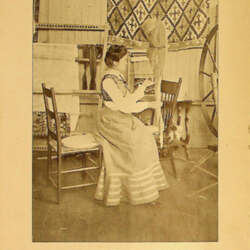
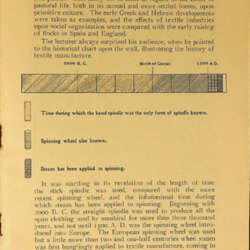

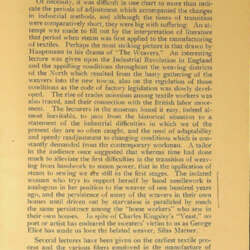
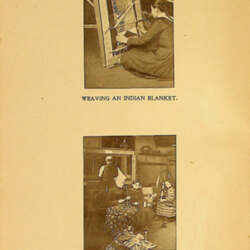
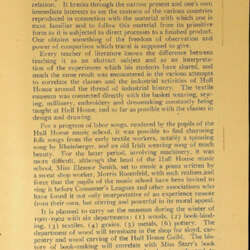
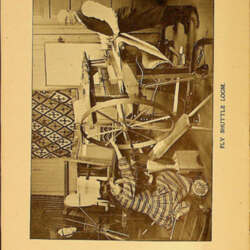




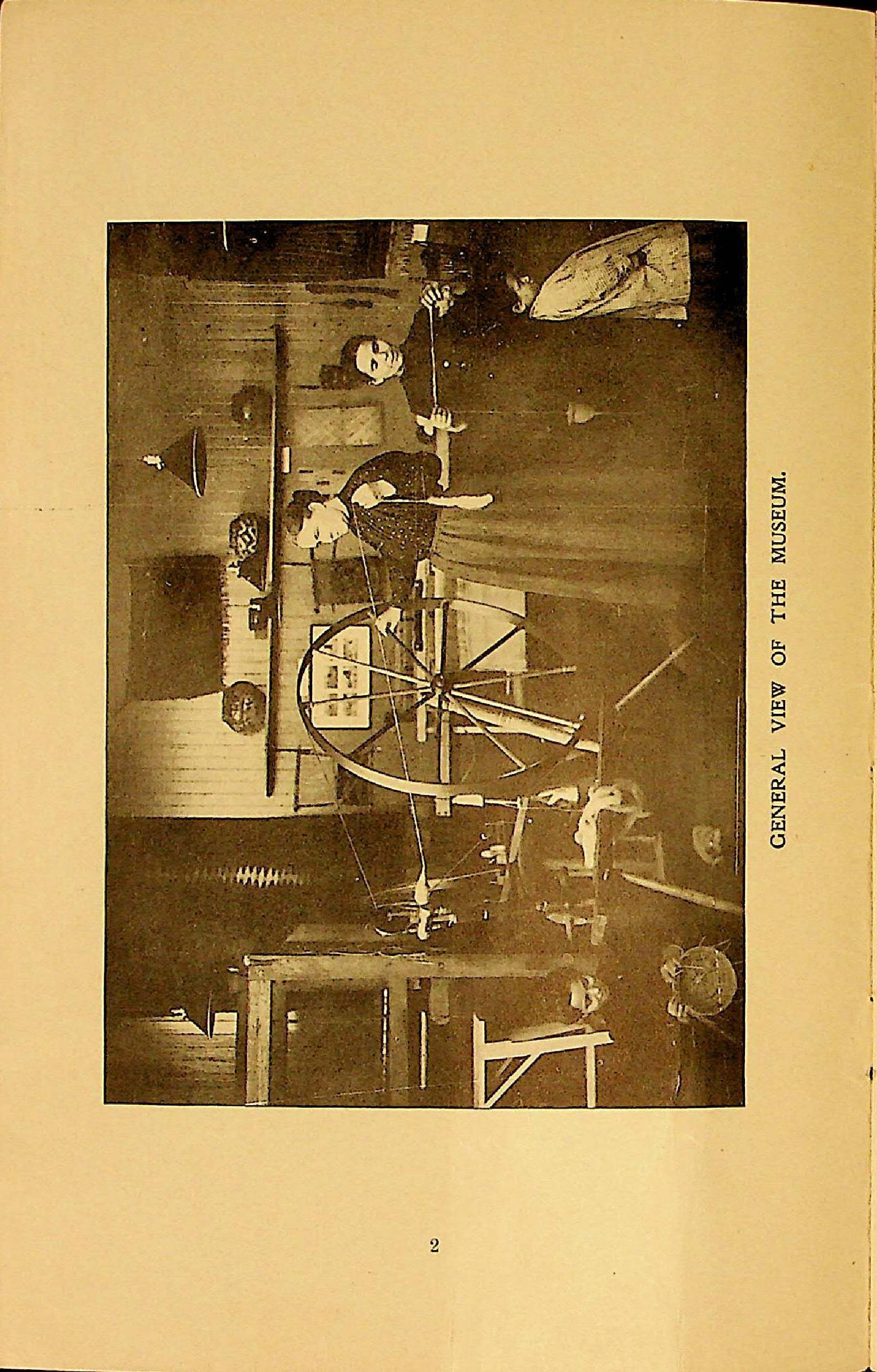

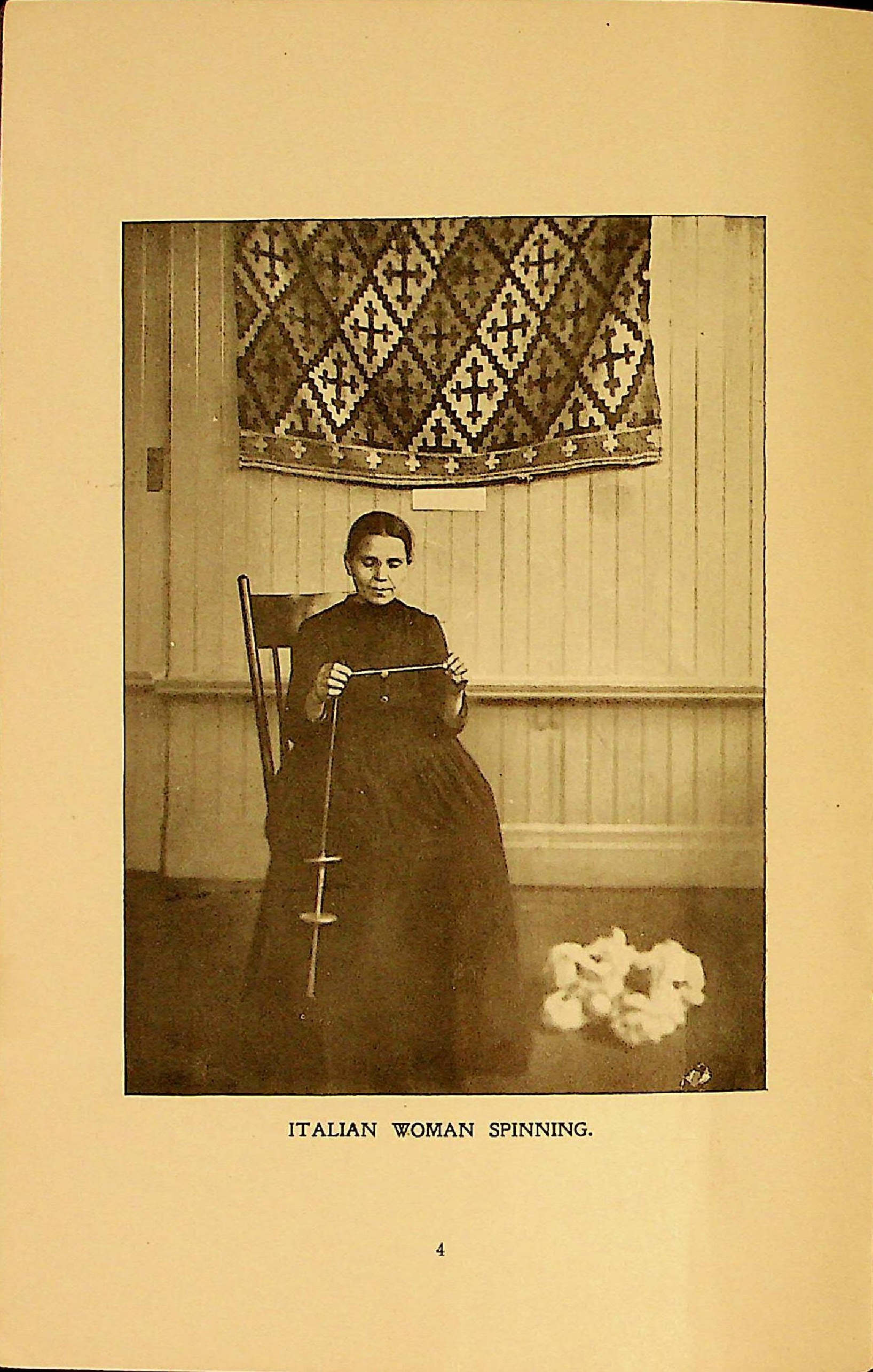


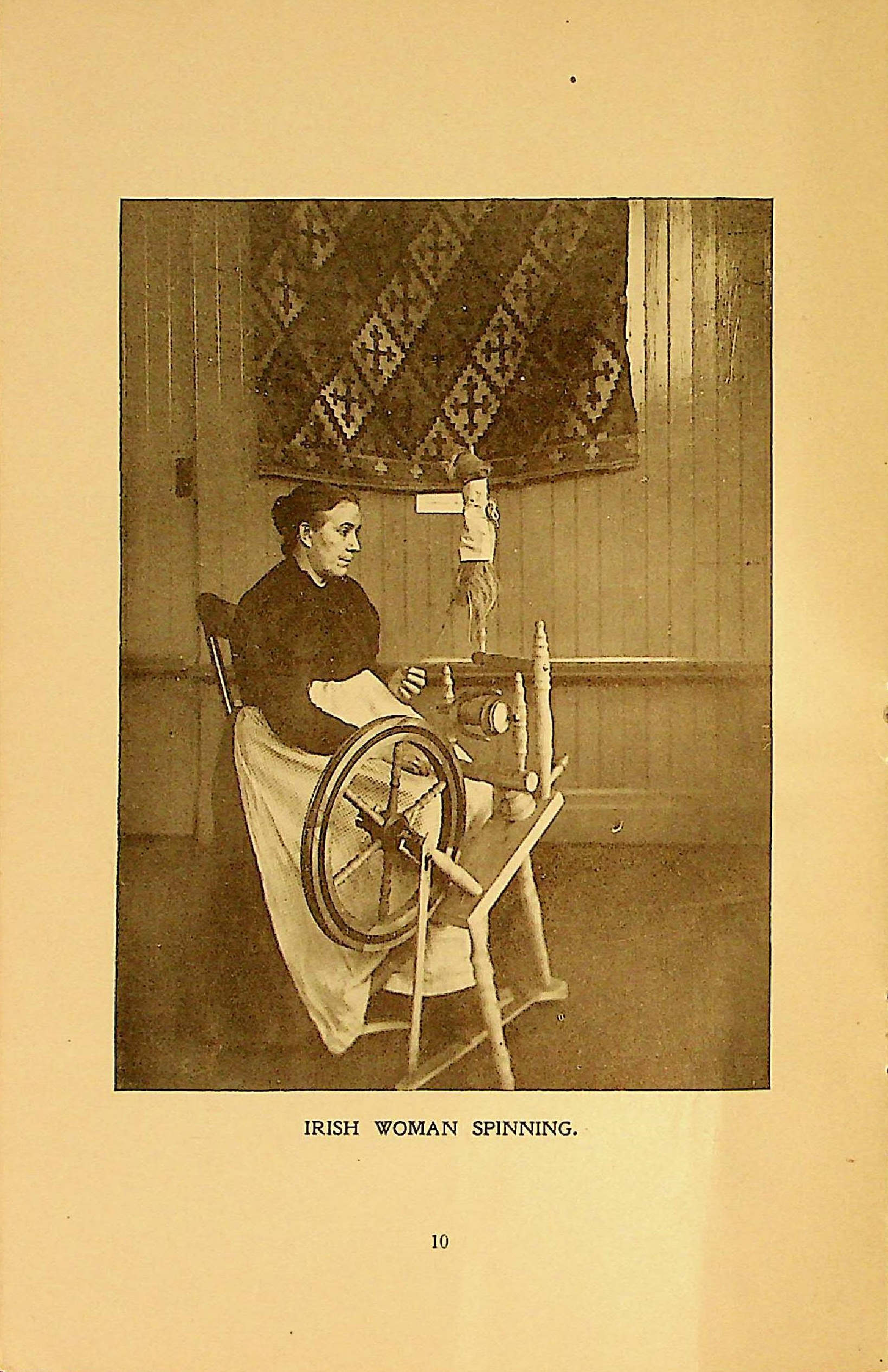




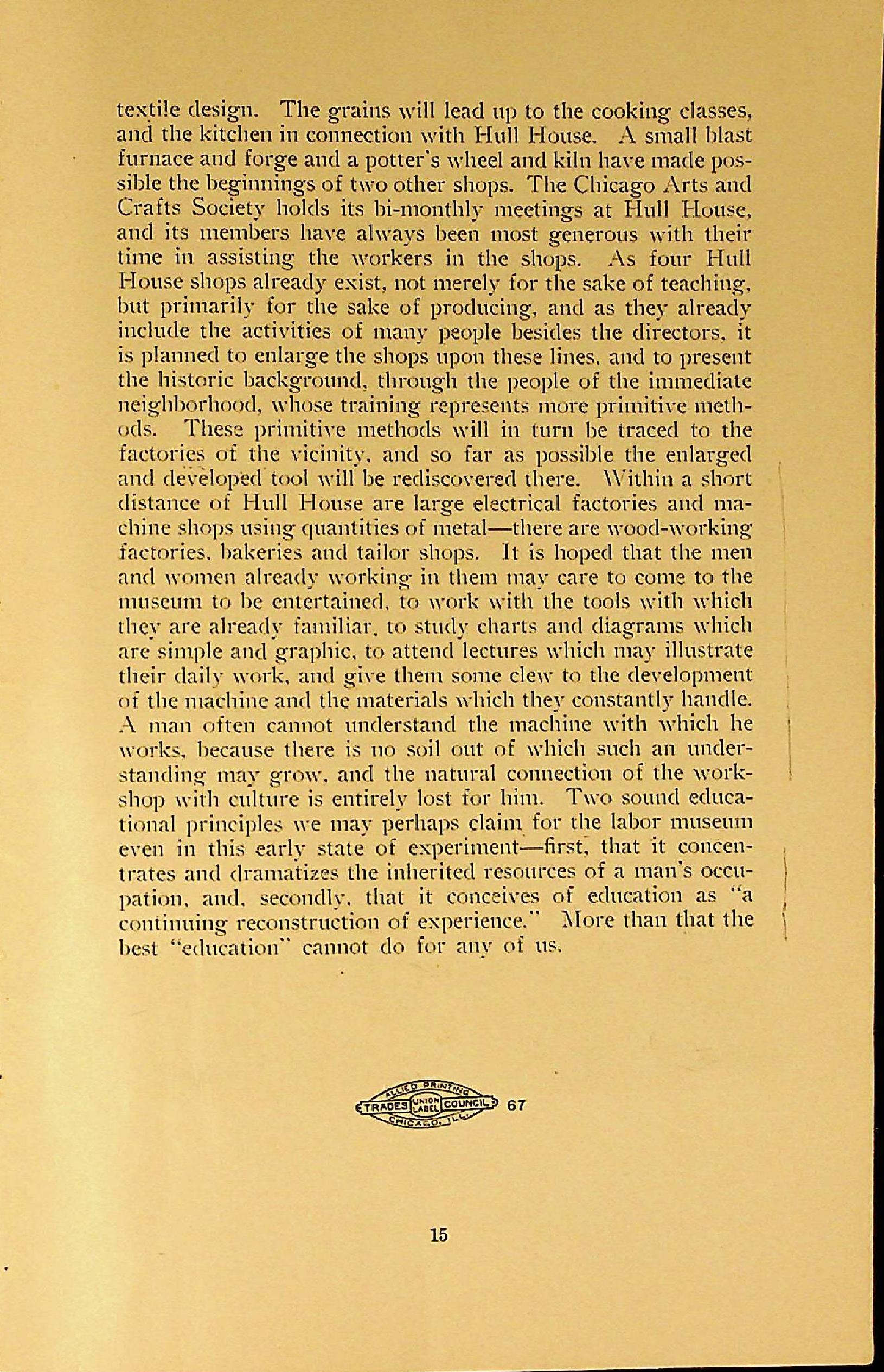


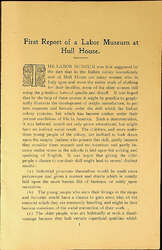

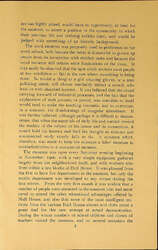






















Comments